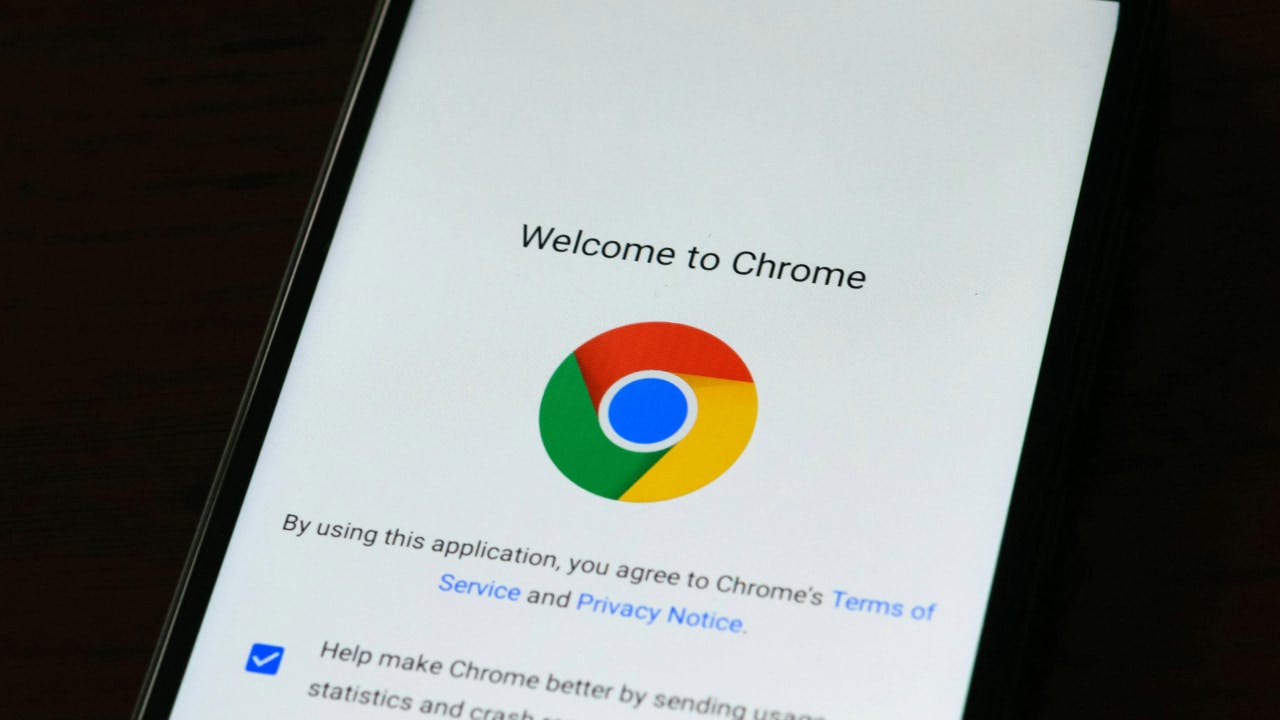Technology
Fox News AI Newsletter: Will your job survive Trump’s Gen AI revolution?

Welcome to Fox News’ Artificial Intelligence newsletter with the latest AI technology advancements.
IN TODAY’S NEWSLETTER:
– Will your job survive Trump’s Gen AI revolution?
– ‘Shazam!’ star Zachary Levi compares AI to biblical disaster
– AI-powered robot sinks seemingly impossible basketball hoops
(Omar Marques/SOPA Images/LightRocket/CHARLY TRIBALLEAU/AFP)
ADAPT: The Trump administration’s recent announcement of a sweeping deregulatory agenda for generative artificial intelligence (Gen AI) has created ripples across industries. This policy shift has implications for professionals and businesses alike, signaling a future where Gen AI development will accelerate quickly. If you want your work and business to survive this new acceleration, you need to adapt quickly to our increasingly disrupted environment.

Zachary Levi attends the UK premiere of Shazam! Fury of the Gods at Cineworld Leicester Square in London on March 7, 2023. (Wiktor Szymanowicz/Anadolu Agency via Getty Images)
THE GREAT FLOOD: “Shazam!” star Zachary Levi feels a biblical disaster looming, thanks to artificial intelligence.
IT’S GOT GAME: While you were busy watching your favorite NBA stars sink three-pointers, a robot was quietly perfecting its game-winning shot in Nagakute, Japan. That’s right, a humanoid robot named CUE6 just stepped onto the court and made jaws drop faster than a Steph Curry buzzer-beater. CUE6, Toyota’s basketball-playing robot, claimed a Guinness World Record for the longest shot by a humanoid robot, proving that AI can play basketball with the best of them.
THE FUTURE IS NOW: The F-35 has had to develop a thick skin. From my former colleagues in Congress to defense-industry experts, the world’s premier fighter jet is accustomed to criticism for issues with cost, production and more. In November, though, one of America’s most influential voices decided to jump on the bandwagon: Elon Musk.

An F-35 fighter plane takes flight. (Luke Air Force Base / Senior Airman Alex Cook)
Subscribe now to get the Fox News Artificial Intelligence Newsletter in your inbox.
FOLLOW FOX NEWS ON SOCIAL MEDIA
Facebook
Instagram
YouTube
Twitter
LinkedIn
SIGN UP FOR OUR OTHER NEWSLETTERS
Fox News First
Fox News Opinion
Fox News Lifestyle
Fox News Health
DOWNLOAD OUR APPS
Fox News
Fox Business
Fox Weather
Fox Sports
Tubi
WATCH FOX NEWS ONLINE
Fox News Go
STREAM FOX NATION
Fox Nation
Stay up to date on the latest AI technology advancements and learn about the challenges and opportunities AI presents now and for the future with Fox News here.

Technology
Birdfy Bath Pro is a voyeuristic take on smart bird feeders
/cdn.vox-cdn.com/uploads/chorus_asset/file/25819295/Birdfy_Bath_Pro.png)
Birdfy has announced the Birdfy Bath Pro, a camera-equipped smart bird bath that lets you watch your local birds as they plop into the water to wash up. The device features two lenses — a wide-angle one and an auto-tracking one — and an optional AI analysis feature that keeps track of and summarizes the bath’s visitors. It’s in preorder now.
The onboard camera consists of a 2MP wide-angle lens that shoots at 1080p and a 3MP “Portrait Lens” with 2K resolution. It carries an IP66 waterproof rating, so it should be able to withstand bird splashes, rain, and a direct blast from a water hose. But if you live somewhere cold, you should know the camera may be slow or not start at all if the outdoor temperature drops below 14 degrees Fahrenheit (or minus 10 degrees Celsius).
The fountain portion comes with five interchangeable nozzles that Birdfy says make “captivating water patterns.” The Bath Pro will run you $249.99, or $299.99 with the stand included. For another $50, you can also get a lifetime subscription to its AI analysis service that Birdfy says will recognize birds and offer daily visitor counts and bird picture highlights. It also offers monthly recaps that rank your bath with that of other Birdfy owners.
Rounding out its features are an integrated solar panel to keep its 9,000mAh battery topped up, cloud storage for videos and images, and Wi-Fi connectivity so you can watch birds from your phone, “catching every flutter and dip in real-time.”
Technology
Hacked Chrome extensions put 2.6 million users at risk of data leak

Your web browser is an ecosystem of its own. It stores your passwords, search history, financial details like credit card numbers, addresses and more. Just like how malicious apps and services can compromise data on your phone or PC, malicious extensions can expose the data stored in your browser.
There are a ton of extensions out there that do more harm than good. In fact, security researchers have just found a dangerous new campaign that is going after browser extensions. So far, around 36 extensions have been compromised, putting over 2.6 million Chrome users at risk of having their browsing data and account credentials exposed.
I’M GIVING AWAY THE LATEST & GREATEST AIRPODS PRO 2
Enter the giveaway by signing up for my free newsletter.
A person using a Chrome browser extension (Kurt “CyberGuy” Knutsson)
How hackers are targeting browser extensions
Hackers are exploiting browser extensions as a gateway to steal sensitive user data through a variety of methods. These compromised extensions are exposing over 2.6 million users to data exposure and credential theft, as reported by The Hacker News.
One common attack involves phishing campaigns targeting the publishers of legitimate extensions on platforms like the Chrome Web Store. In these campaigns, attackers trick developers into granting permissions to malicious applications, which then insert harmful code into popular extensions. This code can steal cookies, access tokens and other user data.
The first company to shed light on the campaign was cybersecurity firm Cyberhaven, one of whose employees were targeted by a phishing attack on December 24, allowing the threat actors to publish a malicious version of the extension.
Once these malicious extensions are published and pass the Chrome Web Store’s security review, they are made available to millions of users, putting them at risk of data theft. Attackers can use these extensions to exfiltrate browsing data, monitor user activity and even bypass security measures such as two-factor authentication.
In some cases, developers themselves may unknowingly include data-gathering code as part of a monetization software development kit, which stealthily exfiltrates detailed browsing data. This makes it difficult to determine whether a compromise is the result of a hacking campaign or an intentional inclusion by the developer.

Image of a Chrome browser on a cellphone (Kurt “CyberGuy” Knutsson)
MASSIVE SECURITY FLAW PUTS MOST POPULAR BROWSERS AT RISK ON MAC
Remove these extensions from your web browser
The browser extension security platform Secure Annex has launched its own investigation into this hacking campaign. So far, it has uncovered over twenty additional compromised extensions, which are listed below. If you have any of the compromised extensions listed in Secure Annex’s investigation installed on your browser, it’s essential to remove them immediately to protect your data.
- AI Assistant – ChatGPT and Gemini for Chrome
- Bard AI Chat Extension
- GPT 4 Summary with OpenAI
- Search Copilot AI Assistant for Chrome
- TinaMInd AI Assistant
- Wayin AI
- VPNCity
- Internxt VPN
- Vindoz Flex Video Recorder
- VidHelper Video Downloader
- Bookmark Favicon Changer
- Castorus
- Uvoice
- Reader Mode
- Parrot Talks
- Primus
- Tackker – online keylogger tool
- AI Shop Buddy
- Sort by Oldest
- Rewards Search Automator
- ChatGPT Assistant – Smart Search
- Keyboard History Recorder
- Email Hunter
- Visual Effects for Google Meet
- Earny – Up to 20% Cash Back
- Cyberhaven security extension V3
- GraphQL Network Inspector
- Vidnoz Flex – Video recorder & Video share
- YesCaptcha assistant
- Proxy SwitchyOmega (V3)
- ChatGPT App
- Web Mirror
- Hi AI
Keeping these extensions installed is a serious risk since hackers can still access your data even if the malicious version has been taken down from the Chrome Web Store. Secure Annex is still investigating and has shared a public Google Sheet with details about the malicious extensions it has found so far, like whether they’ve been updated or removed. They’re also adding new extensions to the list as they discover them.
WORLD’S LARGEST STOLEN PASSWORD DATABASE UPLOADED TO CRIMINAL FORUM
How to remove an extension from Google Chrome
If you have installed one of the above-mentioned extensions on your browser, remove it as soon as possible. To remove an extension from Google Chrome, follow these steps:
- Open Chrome and click the icon that looks like a piece of a puzzle. You’ll find it in the top-right corner of the browser.
- You can see all the active extensions now. Click the three dots icon next to the extension you want to remove and select Remove from Chrome.
- Click Remove to confirm

Steps to remove an extension from Google Chrome (Kurt “CyberGuy” Knutsson)
BEST ANTIVIRUS FOR MAC, PC, IPHONES AND ANDROIDS – CYBERGUY PICKS
7 ways to stay safe from malicious software
1) Verify emails and links before clicking: Many attacks begin with phishing emails that impersonate trusted entities like Google Chrome Web Store Developer Support. These emails often create a false sense of urgency, urging you to click on malicious links. Always verify the sender’s email address and avoid clicking on links without double-checking their authenticity. When in doubt, go directly to the official website rather than using a provided link.
2) Use strong antivirus software: Having strong antivirus software is an essential line of defense against malicious software. These tools can detect and block malicious code, even if it has been embedded in browser extensions. The best way to safeguard yourself from malicious links that install strong malware, potentially accessing your private information, is to have antivirus software installed on all your devices. This protection can also alert you to phishing emails and ransomware scams, keeping your personal information and digital assets safe. Get my picks for the best 2025 antivirus protection winners for your Windows, Mac, Android and iOS devices.
3) Limit extension permissions: Be cautious about the permissions you grant to browser extensions. Many require access to sensitive data like browsing history, cookies or account information, but not all requests are necessary. Review what each extension asks for and deny permissions that seem excessive. If possible, opt for extensions with limited access to ensure your data remains protected.
4) Limit the number of extensions: Only install extensions that are genuinely needed and regularly review and uninstall those no longer in use.
5) Keep your browser updated: Always update your browser to the latest version. Updates often include critical security patches that protect against vulnerabilities exploited by malicious software. Using an outdated browser increases the risk of being targeted by attacks that could have been prevented with a simple update. Enable automatic updates to ensure you’re always protected. If you are unsure how to update your browser, check out my detailed guide for Google Chrome.
6) Regularly audit your extensions: Conduct periodic reviews of installed extensions and remove any that are unnecessary or pose potential security risks.
7) Report suspicious extensions: If you encounter a suspicious extension, report it to the official browser extension marketplace.
SUBSCRIBE TO KURT’S YOUTUBE CHANNEL FOR QUICK VIDEO TIPS ON HOW TO WORK ALL OF YOUR TECH DEVICES
Kurt’s key takeaway
Hackers are getting smarter, and browser extensions have become a new favorite target for stealing sensitive data. The discovery of over 35 compromised Chrome extensions, putting 2.6 million users at risk, is a wake-up call for everyone. Removing suspicious extensions is an essential step to protect your data. This also puts Google’s Chrome Web Store review process under scrutiny, proving that even trusted platforms can be exploited.
How often do you review and remove unused or suspicious browser extensions? Let us know by writing us at Cyberguy.com/Contact.
For more of my tech tips and security alerts, subscribe to my free CyberGuy Report Newsletter by heading to Cyberguy.com/Newsletter.
Ask Kurt a question or let us know what stories you’d like us to cover.
Follow Kurt on his social channels:
Answers to the most asked CyberGuy questions:
New from Kurt: Copyright 2024 CyberGuy.com. All rights reserved.
Technology
L’Oréal claims its new skincare gadget can tell which ingredients work best for you
/cdn.vox-cdn.com/uploads/chorus_asset/file/25815135/L_Oreal_Cell_BioPrint__In_store.jpg)
L’Oréal is hoping its latest beauty gadget can demystify skincare. At CES 2025, the company announced Cell BioPrint, a device that’s designed to analyze your skin and give personalized advice on how to slow down signs of aging.
The device is the result of a partnership with NanoEntek — a Korean startup that specializes in chips that can read biofluids. A person essentially takes a facial tape strip, sticks it on their cheek, and then puts the strip in a buffer solution. That solution is then inserted into a cartridge for the Cell BioPrint to analyze. Once that sample is processed, the device takes images of your face as you answer a few short questions about skin concerns and aging.
From there, L’Oreal says it uses proteomics, or the analysis of protein structure and function from a biological sample. In this case, the Cell BioPrint is designed to determine how well your skin is aging. It’ll then give personalized advice on how to improve your skin’s appearance, as well as predictions of how responsive your skin may be to certain skincare ingredients.
It’s an attractive claim, but as with most beauty tech, it’s difficult to properly evaluate L’Oréal’s methods without peer-reviewed studies or experts weighing in. L’Oréal also claims the device can help predict future cosmetic issues before they manifest. For example, it may be able to determine if your skin is prone to hyperpigmentation or enlarged pores.
Skincare became massively popular during covid-19 lockdowns, sparking a shift in beauty trends toward self-care and the rise of “skinfluencers.” On the flip side, that virality has since turned skincare buying into an extreme sport. Hop onto TikTok, and you’ll find dozens of skinfluencers egging you into dropping $80 on a vial of vitamin C serum, debating the moisturizing properties of glycerin versus hyaluronic acid, or wagging a finger about this or that retinol cream. (Some, may even convince you to buy a wand that zaps your face to increase the efficacy of said ingredients.) It’s confusing, expensive, and maddeningly, what works for one person may not for another. The most the average consumer can do is cross their fingers and hope that the latest potion they bought will actually work.
The Cell BioPrint’s appeal is it claims to use science to cut through that noise. Maybe every skinfluencer says you need to start using retinol when you turn 30, but this device will purportedly tell you based on your own biology whether retinol will actually work for you. Personalization has always been a major theme with CES beauty tech, but it’s particularly compelling with skincare, which is highly dependent on your individual biology. But again, right now there’s no way to know how reliable the Cell BioPrint’s science and recommendations are.
L’Oréal says the Cell BioPrint will be easy to use, with the process taking only five minutes. It also says people will be able to repeat tests, enabling them to monitor changes and progress over time. That said, it might be a while before something like Cell BioPrint is available for consumers. L’Oréal says the device will first be piloted in Asia later this year but otherwise didn’t have a concrete launch timeline or price.
-

 Health1 week ago
Health1 week agoNew Year life lessons from country star: 'Never forget where you came from'
-
/cdn.vox-cdn.com/uploads/chorus_asset/file/24982514/Quest_3_dock.jpg)
/cdn.vox-cdn.com/uploads/chorus_asset/file/24982514/Quest_3_dock.jpg) Technology1 week ago
Technology1 week agoMeta’s ‘software update issue’ has been breaking Quest headsets for weeks
-

 Business5 days ago
Business5 days agoThese are the top 7 issues facing the struggling restaurant industry in 2025
-

 Culture5 days ago
Culture5 days agoThe 25 worst losses in college football history, including Baylor’s 2024 entry at Colorado
-

 Sports5 days ago
Sports5 days agoThe top out-of-contract players available as free transfers: Kimmich, De Bruyne, Van Dijk…
-

 Politics4 days ago
Politics4 days agoNew Orleans attacker had 'remote detonator' for explosives in French Quarter, Biden says
-

 Politics3 days ago
Politics3 days agoCarter's judicial picks reshaped the federal bench across the country
-

 Politics2 days ago
Politics2 days agoWho Are the Recipients of the Presidential Medal of Freedom?















